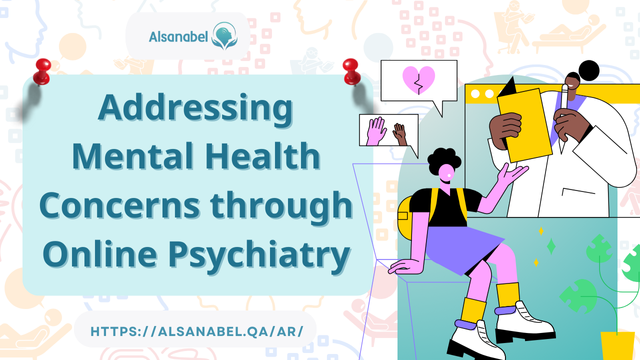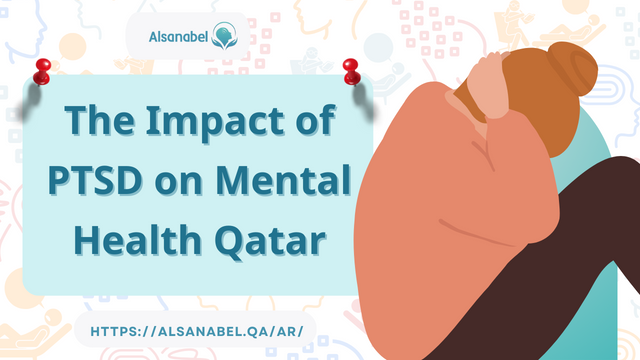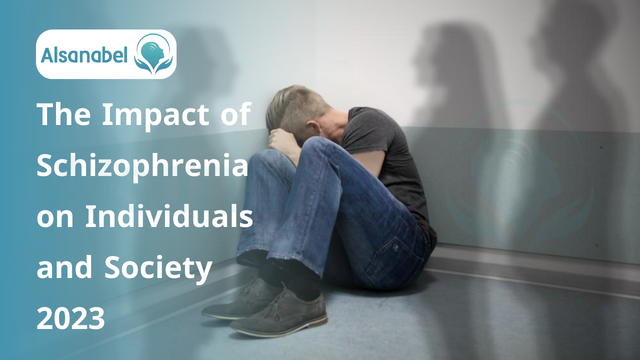Autism Basics and Common Misconceptions 2023
- Category ADHD
Autism Spectrum Disorder
Autism Spectrum Disorder (ASD), also known as autism, is a neurodevelopmental disorder that affects communication, social interaction, and behavior. It is characterized by a range of symptoms and abilities, hence the term “spectrum.” ASD is not a single condition with a specific set of traits, but rather a complex disorder that manifests differently in each individual.
ASD affects people of all ages and backgrounds, and its prevalence is steadily increasing. While the exact cause of autism is still unknown, research suggests a combination of genetic and environmental factors play a role in its development. It is important to note that autism is not caused by parenting or external influences, as was mistakenly believed in the past.
Individuals with autism may experience challenges in social interaction, communication, and repetitive behaviors. They may also have unique strengths and abilities, such as high attention to detail, exceptional memory, and focused interests. It is crucial to understand that autism is a lifelong condition, and early diagnosis and intervention can greatly improve outcomes.
Characteristics and Diagnosis
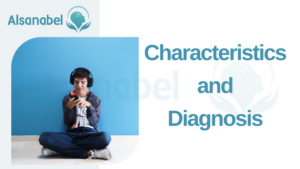
Key characteristics
Autism Spectrum Disorder (ASD) is a complex neurodevelopmental disorder that affects individuals in various ways. While each person with ASD is unique and may exhibit different combinations and intensities of symptoms, there are some key characteristics commonly seen in individuals with ASD. These characteristics include difficulties in social interaction and communication, restricted and repetitive patterns of behavior, interests, or activities, and sensory sensitivities.
In terms of social interaction, individuals with ASD may struggle with making eye contact, understanding and responding to social cues, and developing and maintaining meaningful relationships. They may have difficulty understanding and expressing emotions and may find it challenging to engage in reciprocal conversations.
In terms of communication, individuals with ASD may have delayed speech development, difficulty initiating and sustaining conversations, and a tendency to take language literally. They may also exhibit repetitive or atypical use of language, such as echoing words or phrases (echolalia) or using overly formal or rigid language. Some individuals with ASD may be nonverbal and rely on alternative forms of communication, such as sign language or augmentative and alternative communication devices.
Individuals with ASD often engage in repetitive behaviors, such as hand flapping, rocking, or repetitive movements with objects. They may have highly focused interests and engage in intense, repetitive routines or rituals. Sensory sensitivities are also common in individuals with ASD, and they may be hyper- or hypo-reactive to certain sounds, sights, smells, tastes, or textures.
The diagnostic process and criteria
Diagnosing Autism Spectrum Disorder involves a comprehensive evaluation conducted by healthcare professionals with expertise in ASD. The diagnostic process typically includes a thorough medical and developmental history, observation of the individual’s behavior, and standardized assessments.
The diagnosis of ASD is guided by the Diagnostic and Statistical Manual of Mental Disorders (DSM-5) criteria, which outline the specific criteria and symptoms necessary for a diagnosis. The DSM-5 identifies two main domains of impairment for diagnosing ASD: social communication and restricted, repetitive patterns of behavior, interests, or activities.
To meet the diagnostic criteria for ASD, an individual must exhibit persistent deficits in social communication and social interaction across multiple contexts. They must also demonstrate restricted, repetitive patterns of behavior, interests, or activities. The symptoms must be present in early childhood but may not become fully evident until later in life.
Understanding the Autism Spectrum
Autism spectrum disorder (ASD) is a complex neurodevelopmental disorder that affects individuals in various ways. It is referred to as a spectrum disorder because there is wide variation in the type and severity of symptoms people experience. The autism spectrum encompasses individuals who may have mild difficulties with social interaction and communication to those who have more severe impairments and require significant support.
Different Levels of the Autism Spectrum
Within the autism spectrum, there are different levels that reflect the level of support an individual may require. These levels are typically categorized as Level 1 (requiring support), Level 2 (requiring substantial support), and Level 3 (requiring very substantial support). The level an individual falls under is determined by the impact their symptoms have on their daily functioning and the amount of support they need to navigate social interactions, communication, and daily activities.
Variation in Symptoms and Abilities
It is important to recognize that within the autism spectrum, there is a wide variation in symptoms and abilities among individuals. While there are common characteristics such as difficulties in social interaction, communication challenges, and restricted and repetitive behaviors, the way these symptoms manifest can vary greatly from person to person. Some individuals with autism may have exceptional abilities in specific areas, while others may have significant intellectual challenges. This heterogeneity of symptoms and abilities makes diagnosing and understanding autism complex.
Misconceptions and misperceptions about autism have been prevalent throughout history. This can be attributed to the heterogeneity of cases and the reliance on subjective interpretations of observations and behaviors by clinicians for diagnosis. It is important to dispel these misconceptions and promote a more accurate understanding of autism.
Common Misconceptions about Autism
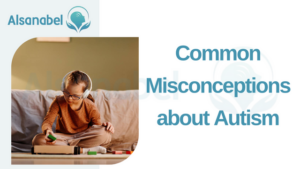
Misconception: Autism is caused by vaccines
One of the most persistent myths about autism is the belief that vaccines are the cause. However, extensive research conducted over the years has consistently proven that vaccines do not cause autism. The original study that suggested a link between vaccines and autism has been discredited and retracted. Numerous studies involving large sample sizes and diverse populations have found no evidence to support this claim. The scientific consensus is clear – there is no known single cause of autism and vaccines are not to blame.
Misconception: Individuals with autism lack empathy
Another common misconception about autism is the belief that individuals with the disorder lack empathy. However, this is far from the truth. While it is true that some individuals with autism may have difficulties with social interactions and communication, it does not mean they lack empathy. In fact, many individuals with autism are highly capable of experiencing and expressing empathy. It is important to understand that empathy can be expressed and experienced in different ways. Just because someone may not express empathy in a typical manner does not mean they do not feel it.
It is crucial to dispel these and other misconceptions about autism in order to foster a better understanding and acceptance of individuals on the autism spectrum. Autism is a complex neurodevelopmental disorder that varies greatly among individuals. Each person with autism is unique, with their own strengths and challenges. It is important to approach each individual with empathy, respect, and an open mind.
Supporting Individuals with Autism
Effective strategies for supporting
When it comes to supporting individuals with Autism Spectrum Disorder (ASD), it is important to approach each person with empathy, understanding, and respect. Here are some effective strategies that can make a significant difference in their lives:
- Create a structured environment: Individuals with ASD often thrive in structured and predictable environments. Establishing routines and clear expectations can help them navigate daily activities more comfortably.
- Use visual supports: Visual aids such as schedules, visual timers, and social stories can assist individuals with ASD in understanding and following instructions. Visual supports can enhance their communication skills and reduce anxiety in challenging situations.
- Provide clear and concise instructions: Individuals with ASD may struggle with processing complex directions. Using simple and concise language when giving instructions can help them better understand and complete tasks independently.
- Foster social skills development: Social interaction can be challenging for individuals with ASD. Encourage social skills development through activities such as role-playing, social stories, and group therapy sessions. These interventions can help them improve communication, empathy, and understanding of social cues.
- Promote sensory-friendly environments: Many individuals with ASD have sensory sensitivities. Creating sensory-friendly spaces, such as providing noise-cancelling headphones or offering quiet areas for breaks, can help reduce sensory overload and support their emotional well-being.
Creating an inclusive and supportive environment
In order to create an inclusive and supportive environment for individuals with ASD, it is essential to promote acceptance and understanding. Here are some ways to foster autism inclusivity:
- Educate others: Raise awareness about autism by providing information and resources to teachers, parents, and peers. Educating others about the challenges faced by individuals with ASD can lead to greater empathy and acceptance.
- Encourage inclusive activities: Include individuals with ASD in activities and events to promote social interaction and inclusivity. Encourage their participation in sports, clubs, and other extracurricular activities, ensuring they have the necessary support and accommodations.
- Provide training and support for educators: Equip educators with the knowledge and skills to support individuals with ASD effectively. Professional development opportunities and ongoing training can help teachers create inclusive classrooms and implement appropriate strategies.
- Build partnerships with autism organizations: Collaborate with local autism organizations to access resources, support networks, and expert advice. Partnering with these organizations can provide valuable insights and guidance on best practices for supporting individuals with ASD.
Remember, autism inclusivity is crucial for creating a more accepting and supportive society for individuals with autism. By implementing these strategies and promoting understanding, we can contribute to a world that embraces the unique strengths and challenges of individuals.
Promoting Awareness and Acceptance
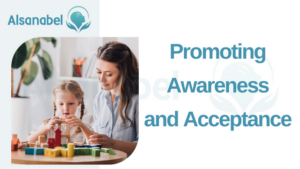
The importance of spreading awareness
Spreading awareness about Autism Spectrum Disorder (ASD) is crucial in promoting acceptance and understanding of individuals with this condition. By raising awareness, we can debunk common misconceptions and create a more inclusive society for individuals with ASD. Here are some key reasons why spreading awareness about ASD is important:
- Reduce stigma and stereotypes: Many misconceptions exist about ASD, leading to stigmatization and prejudice towards individuals with the condition. By spreading awareness, we can challenge these stereotypes and encourage greater acceptance and support.
- Enhance early detection and intervention: Increased awareness can lead to earlier detection of ASD in children. Early intervention is crucial for improving outcomes and providing appropriate support to individuals with ASD and their families.
- Improve access to resources and support: Awareness efforts can help individuals with ASD and their families access the resources and support they need. By informing communities about available services, therapies, and support organizations, we can ensure that individuals with ASD receive the necessary assistance.
- Promote inclusive education: Awareness about ASD can help schools and educators create inclusive learning environments. Educating teachers and peers about the unique needs and strengths of individuals with ASD can lead to more inclusive classrooms and better support for these students.
Common misconceptions about Autism Spectrum Disorder (ASD)
Despite increased awareness, many misconceptions about ASD persist. These misconceptions can hinder acceptance and support for individuals with the condition. Here are some common misconceptions about ASD:
- Autism is a mental illness: ASD is not a mental illness; it is a neurodevelopmental disorder characterized by social, communication, and behavioral differences. Individuals with ASD have unique strengths and challenges, but they do not have a mental illness.
- All individuals with ASD have the same characteristics: ASD is a spectrum disorder, meaning that individuals can present with a wide range of characteristics and abilities. Each person with ASD is unique, and their experiences and abilities vary greatly.
- Autism can be cured: There is no cure for ASD. However, early intervention and appropriate support can help individuals with ASD develop skills and manage their challenges effectively.
- Individuals with ASD lack empathy: Contrary to popular belief, individuals with ASD are capable of empathy. They may have difficulty expressing empathy in ways that neurotypical individuals do, but they can still understand and feel empathy towards others.
more Common misconceptions
- Myth: All individuals with autism are nonverbal or have intellectual disabilities.
Reality: While some individuals with autism may have speech and intellectual challenges, others have average or above-average intelligence and are highly verbal. - Myth: Autism is caused by vaccines.
Reality: Extensive research has debunked the claim that vaccines lead to autism. Vaccines are safe and necessary to protect against infectious diseases.
By spreading awareness and debunking these misconceptions, we can create a more accepting and supportive environment for individuals with ASD. Promoting understanding and fostering acceptance is essential for building a society that values the unique strengths and contributions of individuals with ASD.

